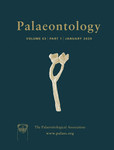Reg. Charity No. 1168330

Over the past decades, coralline algae have increasingly been used as archives of palaeoclimate information due to their seasonal growth bands and their vast distribution from high latitudes to the tropics. Traditionally, these reconstructions have been performed mainly on high latitude species, limiting the geographical area of their potential use. Here we assess the use of temperate crustose fossil coralline algae from shallow water habitats for palaeoenvironmental reconstruction to generate records of past climate change. We determine the potential of three different species of coralline algae, Lithothamnion minervae, Lithophyllum stictaeforme and Mesophyllum philippii, with different growth patterns, as archives for pH (δ11B) and temperature (Mg/Ca) reconstruction in the Mediterranean Sea. Mg concentration is driven by temperature but modulated by growth rate, which is controlled by species‐specific and intraspecific growth patterns. L. minervae is a good temperature recorder, showing a moderate warming trend in specimens from 11.37 cal ka BP (from 14.2 ± 0.4°C to 14.9 ± 0.15°C) to today. In contrast to Mg, all genera showed consistent values of boron isotopes (δ11B) suggesting a common control on boron incorporation. The recorded δ11B in modern and fossil coralline specimens is in agreement with literature data about early Holocene pH, opening new perspectives of coralline‐based, high‐resolution pH reconstructions in deep time.